Santi Cosma e Damiano, in the province of Latina, takes its name from a brother and sister, both doctors, who were martyred in 303 AD. The village, washed by the waters of the Garigliano River, lies along the Direttrice Appia Pedemontana on the Via Francigena del Sud.

The Sanctuary of Santi Cosma e Damiano – www.comune.santicosmaedamiano.lt.it
The Basilica Sanctuary of Santi Cosma e Damiano in the historic centre is one of the few buildings that survived the bombings during the Second World War. Each architectural detail refers to the number three, the Symbol of the Holy Trinity. The two side doors architraves bear inscriptions in Latin about the thaumaturgical virtues of the two saints, while the polychrome glass window of the central niche portrays their glory. The Basilica also hosts the statues of the two Saints in poplar wood, dating back to the end of the eighteenth century, the work of an unknown artist from the Campanian School.
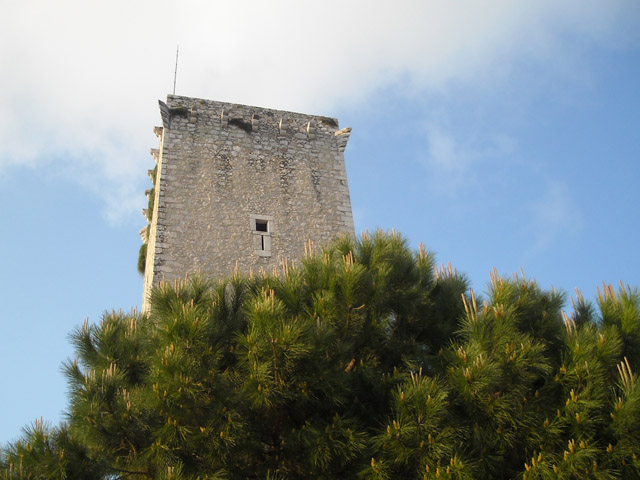
Torre di Ventosa in Santi Cosma e Damiano – www.comune.santicosmaedamiano.lt.it
In the upper part of the village lies the hamlet of Ventosa, where a twenty-four-metre-high limestone tower in Romanesque style stands out. It was built on the hill between the twelfth and the thirteenth centuries with no walls around, with the purpose of controlling the northwards. Inside the tower, a rainwater cistern was created, with the aim of supplying the entire village.
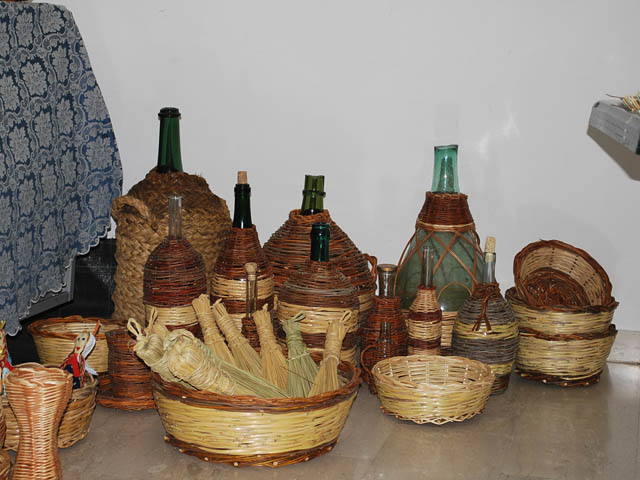
Stramma baskets, Santi Cosma e Damiano – www.comune.santicosmaedamiano.lt.it
The hamlet of Ventosa is linked to the crafting of stramma, a resistant and perennial kind of straw, woven by local artisans to create bags, hats and doormats. It is said that Saint Paul, on his way to Rome, stopped in Ventosa, where he received from the inhabitant a new bag made of straw.
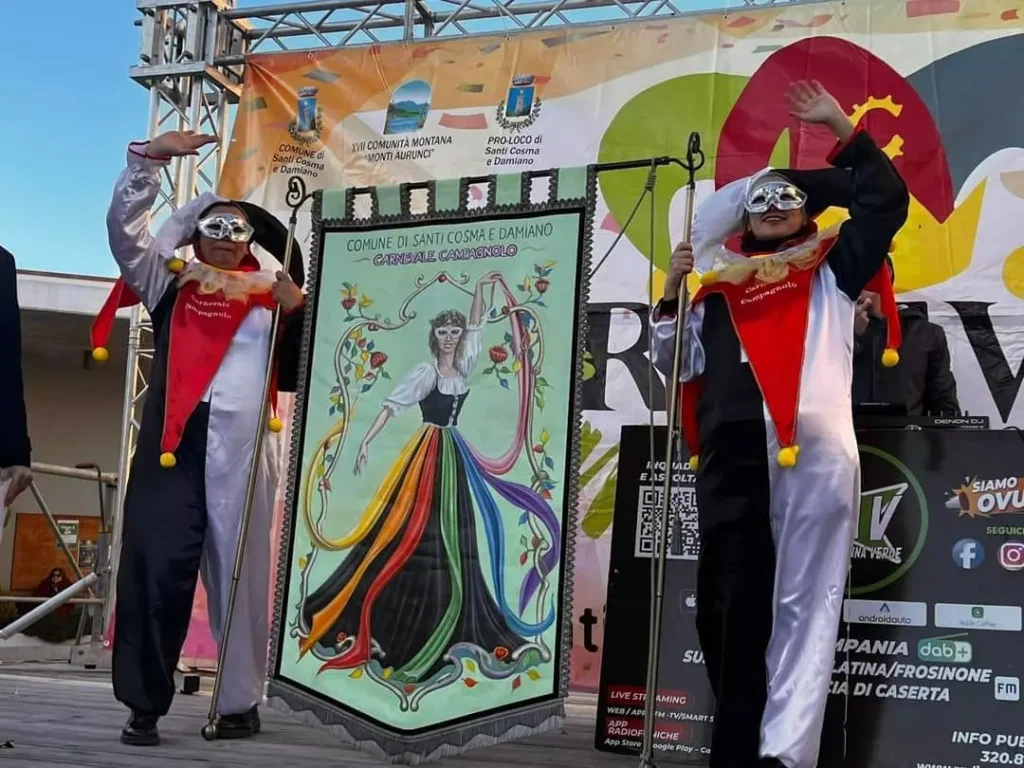
the Gonfalone at the Carnevale Campagnolo – www.carnevalecampagnolo.it
The Carnevale Campagnolo, among the most famous events of this kind in Lazio, was included in 2005 in the List of the most famous Italian Historical Carnivals. The historical parade is opened by the two Gonfalons of the Municipality and the Carnevale Campagnolo, the latter depicting “La Pacchiana”, a beautiful peasant woman in traditional local dress.
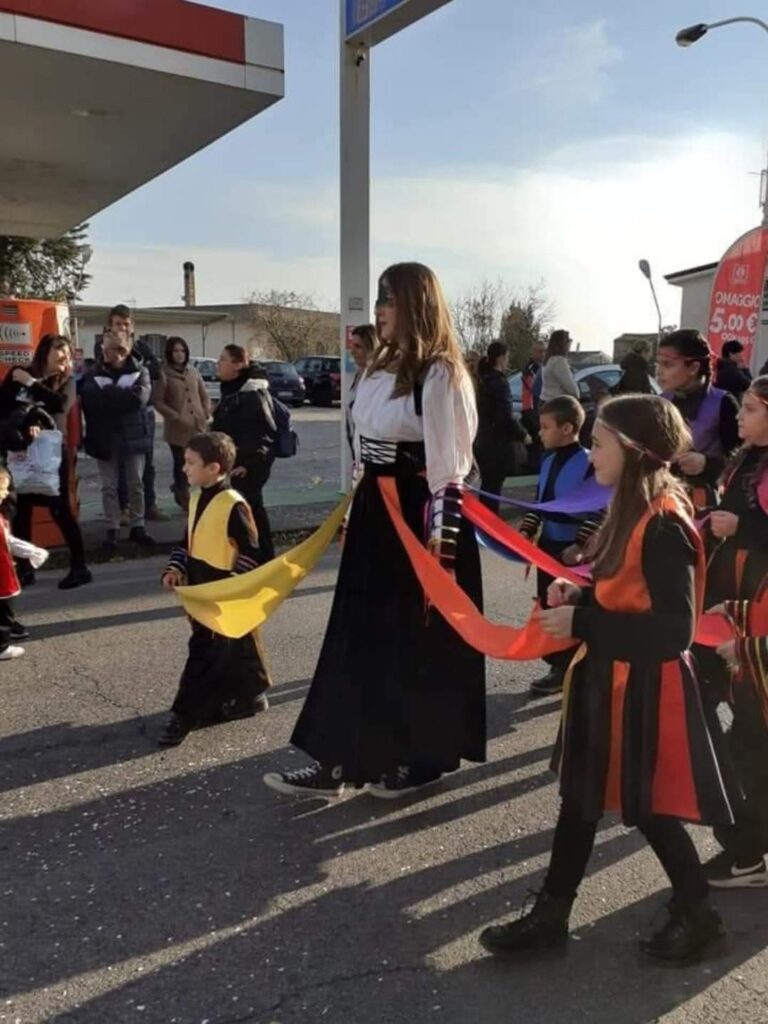
Angiolella and “Gli Ninni” at the Carnevale Campagnolo – www.carnevalecampagnolo.it
But the godmother of the Carnival and symbol of the town is Angiolella, a figure inspired by “La Pacchiana”. She wears the embroidered traditional costume, enriched with the symbols of Santi Cosma and Damiano. The black silk velvet skirt is decorated with seven satin ribbons representing the seven colours of the rainbow, held by seven children “Gli Ninni”.
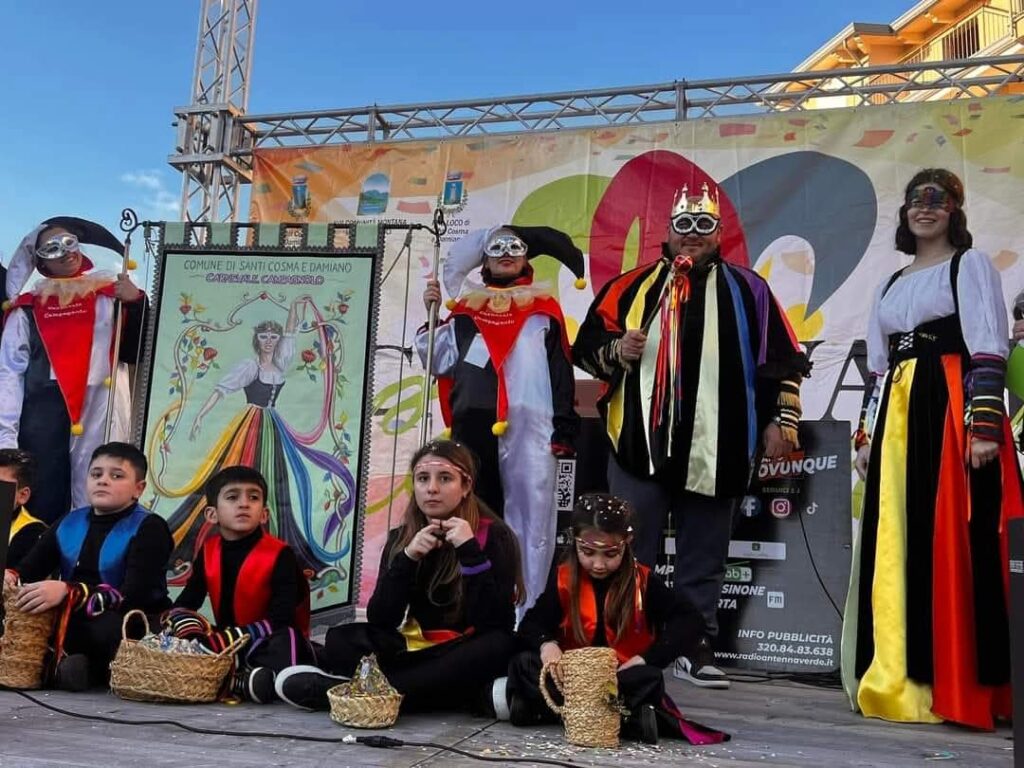
Don Antonio, the King of the Carnevale Campagnolo– www.carnevalecampagnolo.it
“Gli Ninni” accompany Angiolella to the King of the Carnival, Don Antonio, who wears a black silk velvet cape, embellished with rainbow-coloured rays.
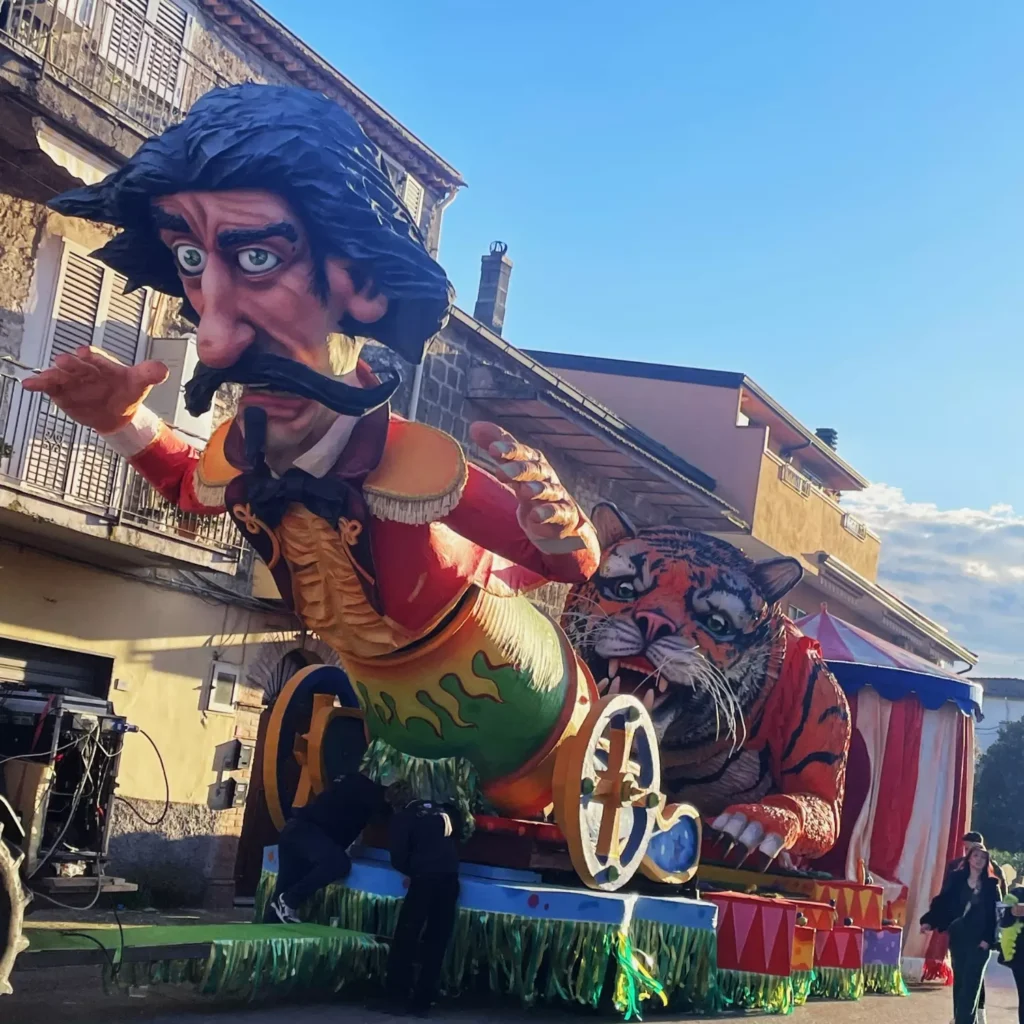
The floats at the Carnevale Campagnolo – www.carnevalecampagnolo.it
The allegorical floats, created by craftsmen from the different Contrade, carry in procession huge papier-mâché sculptures held up by iron structures and moved by an original hydraulic system.
